
What is King’s Vegetable? Its Uses and Delicious Dishes
King’s vegetable is a nutrient-rich vegetable beneficial for the body. Its unique crunchy texture makes it a favorite among many. If you don’t know what King’s vegetable is, let’s explore this vegetable together.
1 What is King’s Vegetable?
King’s vegetable (also known as sea celery, ditch vegetable, or boiling vegetable) is a herbaceous plant belonging to the Lactuca genus, closely related to lettuce. This vegetable originates from Jiangsu Province, China. The name “King’s vegetable” or “ditch vegetable” is believed to stem from its historical use as a tribute to the emperor and the royal court.
King’s vegetable has a thick, cylindrical stem, bright green, smooth surface, and can grow up to 1 meter tall when mature. When eaten, the stem has a refreshing and jellyfish-like crunchy taste. The leaves are large, long, and covered with fine hairs.
During harvest, farmers remove the leaves and retain only the stem. This stem undergoes further processing such as peeling, cutting, and drying for extended preservation while maintaining its freshness.
Most King’s vegetables on the market are dried. Before consumption, soak them in water for 2-3 hours to restore their original size.
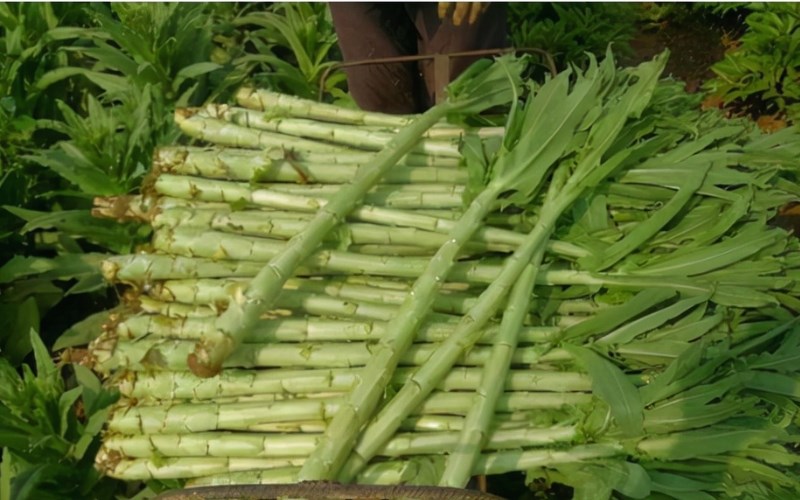
2 Unexpected Uses of King’s Vegetable
King’s vegetable is rich in fiber, carotene, vitamin C, and vitamin E, beneficial for human health. It’s also rich in calcium, iron, zinc, and various amino acids. Here are some amazing uses of King’s vegetable you may not know:
- Good for Digestion: The abundant fiber content can stimulate digestive activity and prevent constipation.
- Beautifies Skin, Anti-aging: Vitamin E helps beautify the skin and boost immunity. According to traditional Chinese medicine, King’s vegetable has a cooling effect, helping to clear heat and detoxify, thus supporting skin problems, beautifying skin, and providing good anti-aging effects.
- Good for Cardiovascular Health, Improves Memory: King’s vegetable can help lower blood pressure, stimulate stable blood flow, thus improving memory and reducing the risk of cardiovascular diseases such as heart attack, myocardial infarction, stroke, and cerebral ischemia.
- Supports Cancer Prevention: Like many other vegetables, King’s vegetable contains substances that inhibit the formation of cancer cells. Therefore, regular consumption of King’s vegetable may reduce the incidence of cancer.
- Weight Loss: King’s vegetable is very low in calories, making it a good supporting food for effective weight loss.
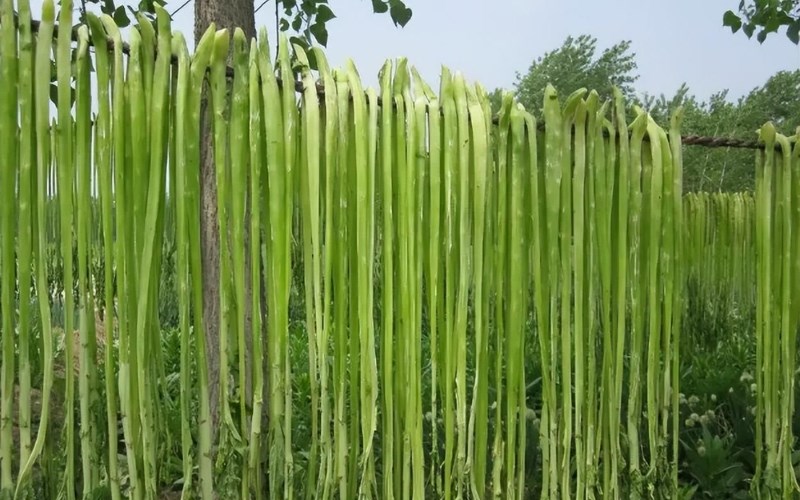
3 Distinguishing King’s Vegetable and Lettuce
King’s vegetable is often mistaken for lettuce due to their similar appearance. The comparison table below lists some differences between King’s vegetable and lettuce for easy identification:
| King’s Vegetable | Lettuce | |
| Stem Shape and Size | Slender stem, 60-100cm tall | Swollen base, 15-30cm tall |
| Leaf Shape | Long, slender leaves, bright green, with fine hairs on the surface, relatively flat leaf blades | Long and wide leaves, slightly serrated edges, dark green or grayish-green leaves |
| Used Part | Mainly the stem | Both stem and leaves are used for cooking |
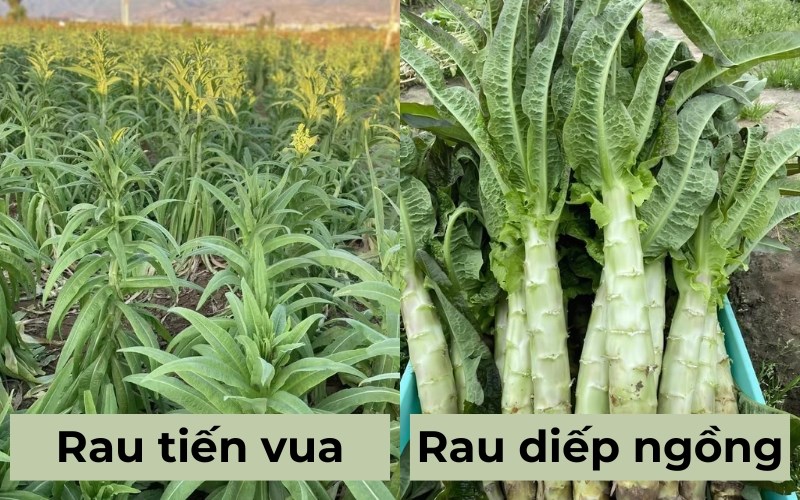
4 How to Soak King’s Vegetable for Crispness
Purchased King’s vegetable is usually dried. Before cooking, soak it to restore its original form. To ensure crispness, follow these suggestions.
Soaking in Warm Water
Boil a pot of water, then add cold water to adjust the temperature to 40-50°C (the water should feel lukewarm to the touch). Soak the vegetable for 30-60 minutes until tender. After soaking, rinse with clean water and prepare for cooking.
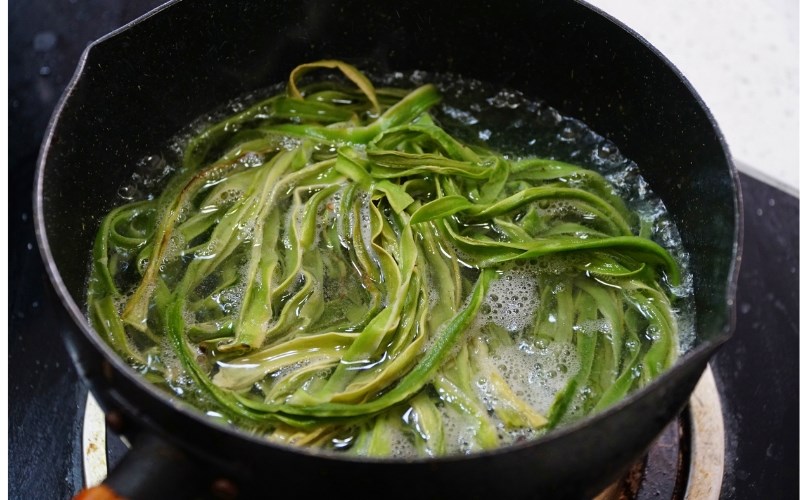
Soaking in Salt Water
For a greener and tastier result, soak in salt water. Prepare a bowl of warm water, add an appropriate amount of salt, and then add the prepared King’s vegetable. Spread the vegetables out to ensure even salt distribution.
Soaking time is usually about 1 hour. King’s vegetable soaked in salt water will be greener and softer, resulting in a better flavor when cooked.
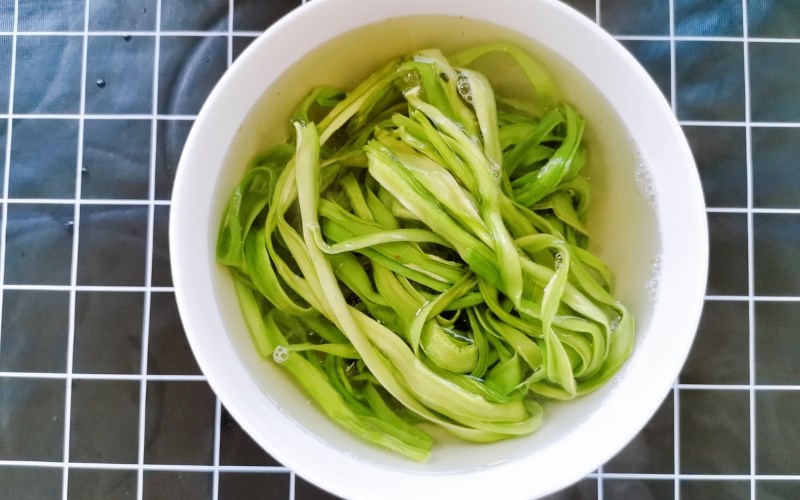
Soaking in Cold Water
The simplest method is soaking in cold water (regular tap water), but this takes longer, usually 4-6 hours. If the outside temperature is high, change the water after a few hours to prevent odors.
After soaking, rinse thoroughly and prepare for cooking.

5 Delicious King’s Vegetable Dishes
King’s Vegetable Salad
To fully enjoy the unique crunchy flavor, make a salad. After soaking, rinse thoroughly, then cut into bite-sized pieces.
Mix King’s vegetable with shrimp, pork, and pig’s ears, or with mushrooms for a vegetarian salad, according to your preference.
Pickled King’s vegetable is a great way to preserve it for several days. Prepare the King’s vegetable and sliced garlic and chili. Boil a pickling liquid of 300ml water, 300ml vinegar, and 100g sugar, then let it cool.
Arrange the King’s vegetable, garlic, and chili in a glass jar, pour in the pickling liquid, and let it sit for one day before eating.
King’s Vegetable Stir-fried with Shrimp and Pork
King’s vegetable can also be stir-fried with beef, pork, or fresh shrimp. The crunchy texture of King’s vegetable combined with the tender meat will create an irresistible dish.
Vegetarian King’s Vegetable Stir-fry
King’s vegetable can also be used in delicious and visually appealing vegetarian stir-fries. We suggest a simple and colorful vegetarian King’s vegetable stir-fry for your reference.
A tip for maintaining crispness during stir-frying: after soaking until tender, soak the vegetable in ice water for another 5-10 minutes to firm it up.
Since King’s vegetable can be eaten raw, stir-fry only until it’s flavored, avoiding overcooking which can make it soggy.
Hopefully, this article has helped you understand and differentiate King’s vegetable from lettuce. Don’t forget to follow the Cooking Tips section for more helpful tips!



